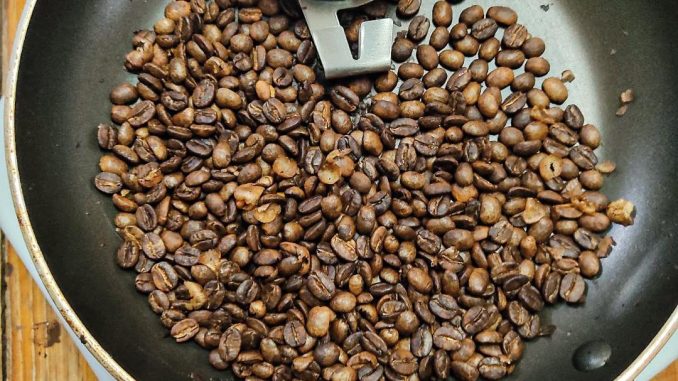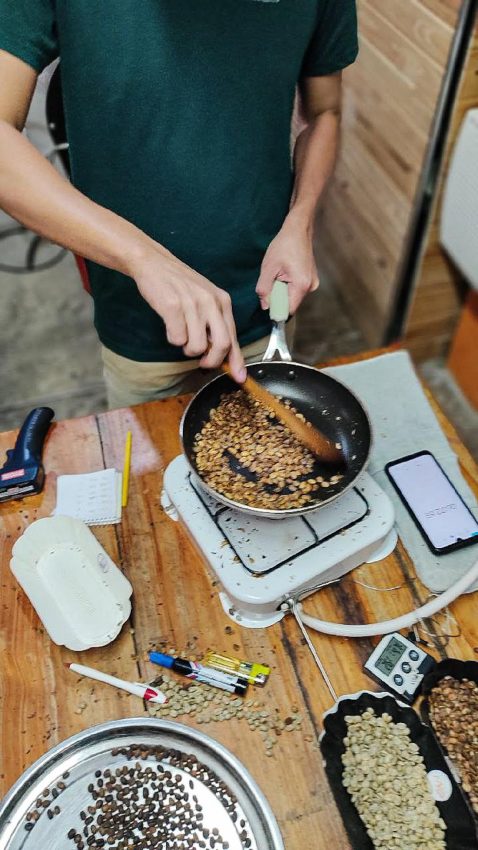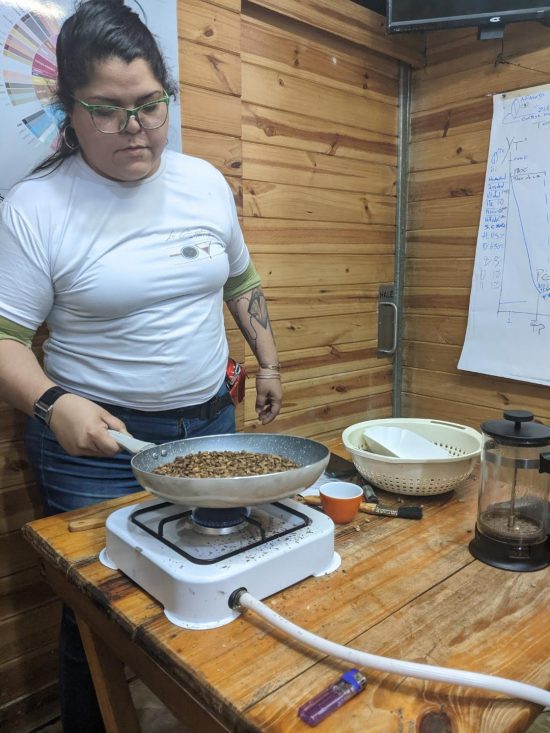
Roasting coffee on a pan by stovetop may be another way to make specialty coffee accessible to all.
BY YKER VALERIO
SPECIAL TO BARISTA MAGAZINE ONLINE
Cover photo by Kleidy Ramirez
When I started grinding coffee at home several years ago, I learned through a friend that people in coffee-producing regions in Venezuela—where I live—roast coffee with frying pans or skillets.
I quickly became curious about this practice. However, it was only recently that I had the chance to learn firsthand how to roast coffee using a frying pan. Coincidentally, a few weeks ago, I stumbled upon social media content about roasting coffee with a skillet.
Stovetop coffee roasting not only allows us to explore coffee beans’ complexities, but it’s also a way to open doors to specialty coffee by making the roasting of beans more accessible.
Going After the First Crack
Coffee historian Jonathan Morris tracks coffee roasting back to the 15th century. It seems that Muhammed al-Dhabani, a Sufi mufti, promoted changing the main ingredient of qahwa, a brew traditionally shared during religious rituals. Perhaps concerned by the potential hallucinogenic effects of khat (a stimulant drug), Muhammed observed beneficial properties in coffee on a trip to Ethiopia. After drinking coffee, the Arab wise man noted that people were more alert and vigorous—benefits that became appealing to all of us soon enough.
Roasting coffee with a pan was the only way to do it back then—a 15th-century coffee roasting pan looks like an ancient pizza stone. To some extent, experimenting with stovetop coffee roasting connects us with this distant past. And just like baking bread at home, it opens our eyes to the daily miracles of modern culture.

For Víctor Montilla, coffee producer and owner of Boca Café, stovetop coffee roasting is a way to honor his ancestors. “My grandmother used to roast coffee on a pan all day long after my grandparents harvested coffee at our family estate,“ Víctor says.
In many estates across Latin America, freshly roasted coffee doesn’t last long before being made into a cup of steaming black coffee—and it has been like that for centuries. So what’s the point of learning stovetop coffee roasting in cities with access to specialty-coffee roasters?
Stovetop Roasting as a Way to Promote Specialty Coffee
A knowledge gap prevents a broader audience from specialty coffee. Appreciating coffee quality, personal preference, and unconventional aromatic profiles is critical for deeper involvement in the specialty-coffee world—and these traits can prevent others from accessing it.
As challenging as it might be to roast coffee with a pan, it’s provocative, too. Thanks to a local roasting competition, I learned to roast using a frying pan, an infrared thermometer, and a wooden spoon. Kleidys Ramírez, founder and head roaster at Melosa, created the competition in 2020 and launched the second edition in 2021.

The event, La Competencia en Paila, demonstrates a method of coffee roasting that everyone can use. But more importantly, it spreads knowledge about the basic principles of green coffee quality, as well as personal preference in roasts.
Before roasting, competitors trained with Kleidys to learn how to identify the most common defects in green coffee beans and then take out quakers from roasted coffee. Additionally, each participant learns the principles behind coffee transformation through the roasting process. According to Kleidys, sharing coffee roasting knowledge is essential to promoting specialty coffee in Venezuela—and that is very likely true for many other producing and importing countries as well.
ABOUT THE AUTHOR
Yker Valerio (he/him) is a freelance content creator. After more than 10 years of working as a management consultant, he started the blog Bon Vivant Caffè to share his passion for specialty coffee.

